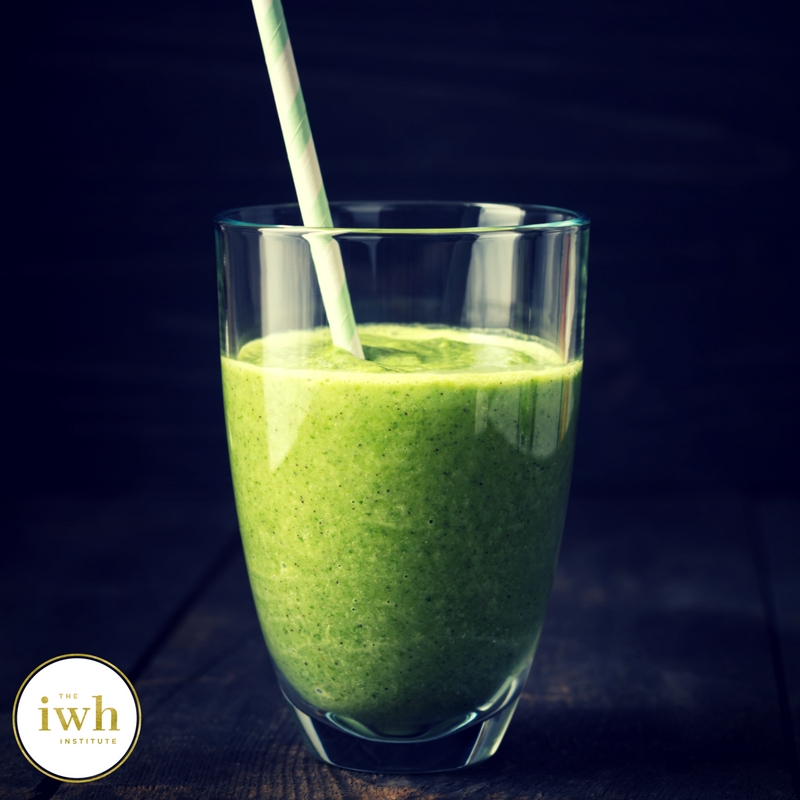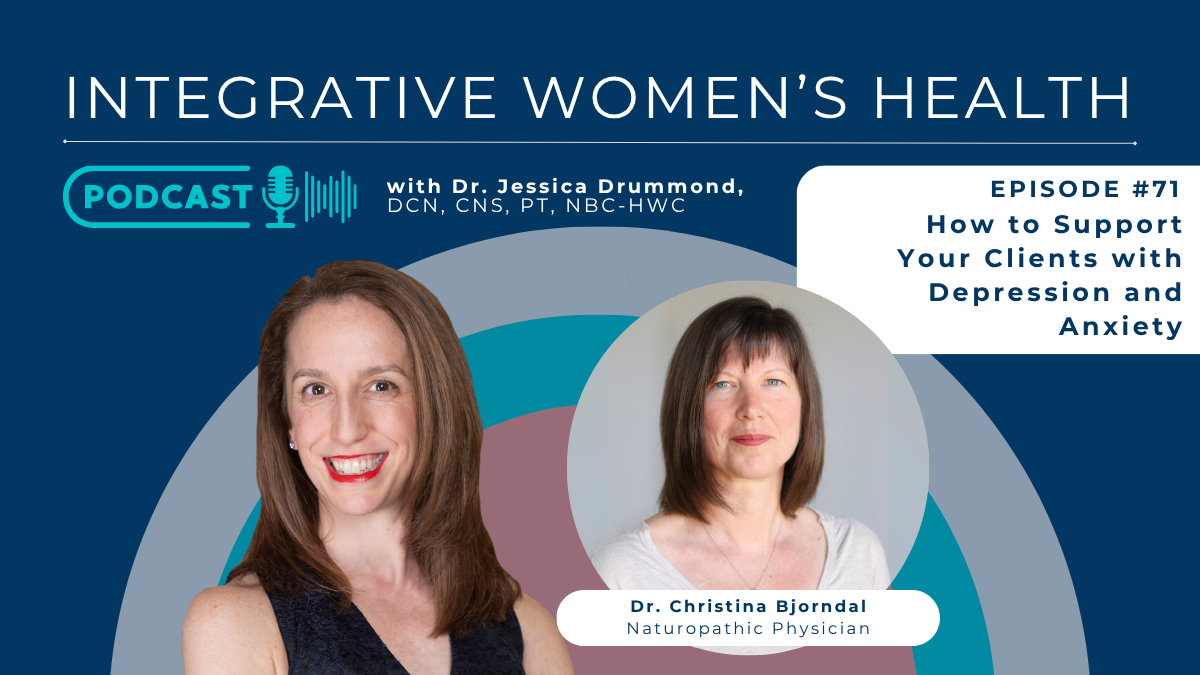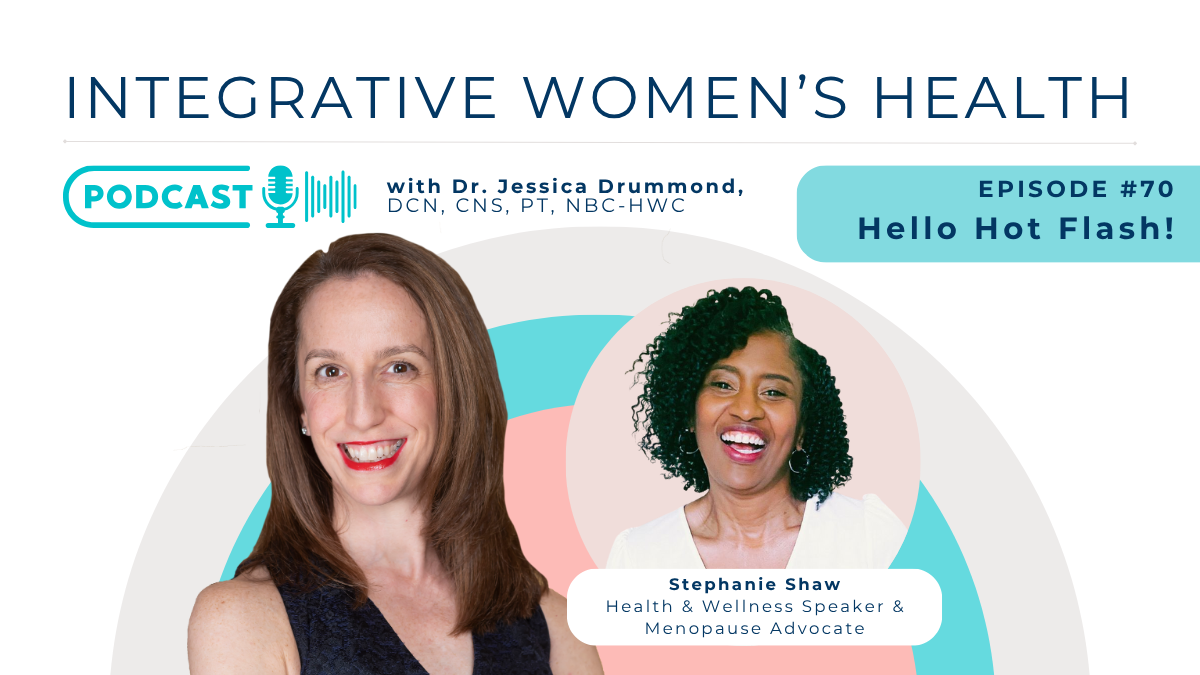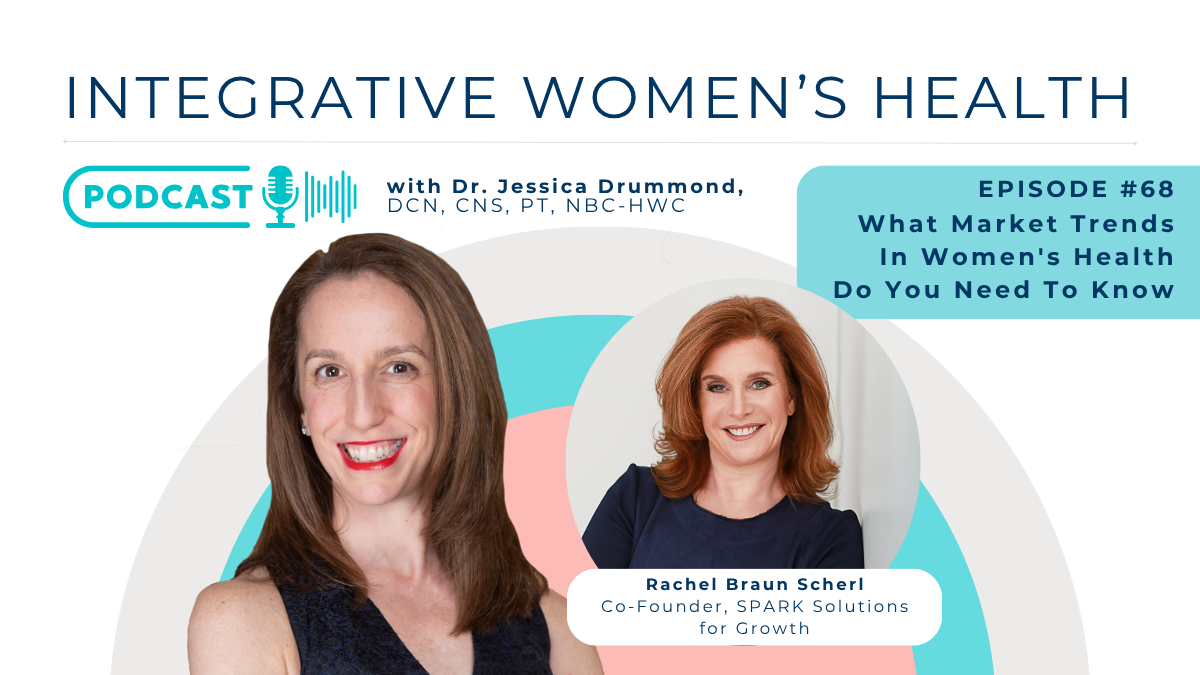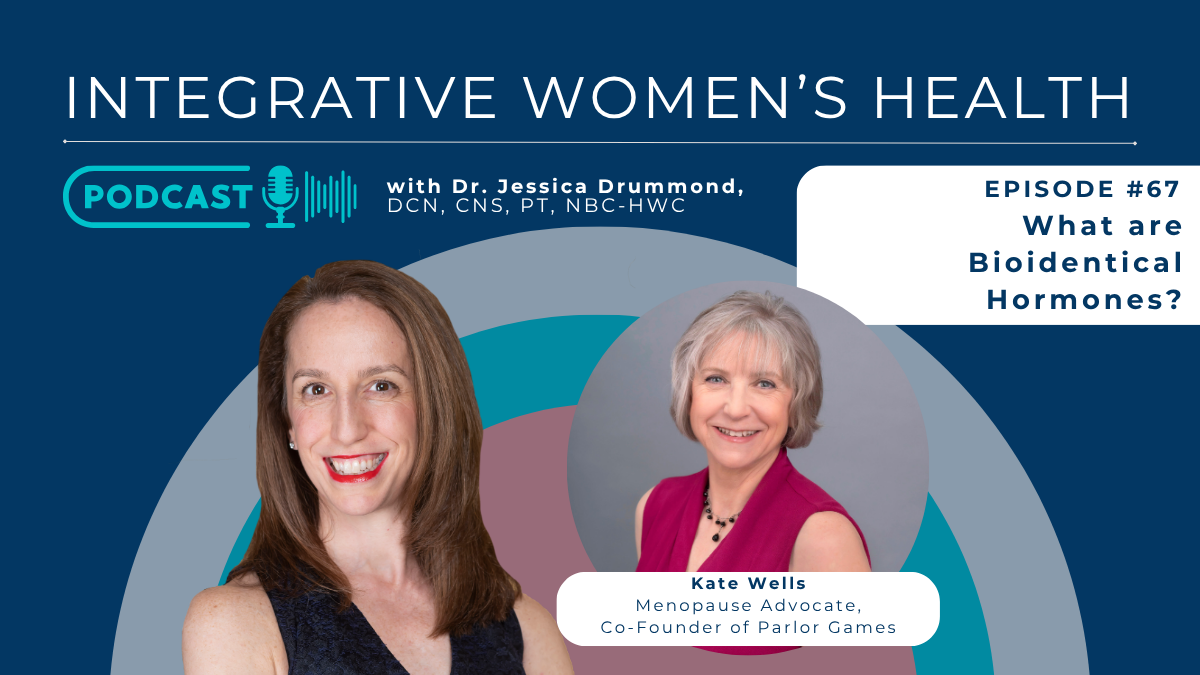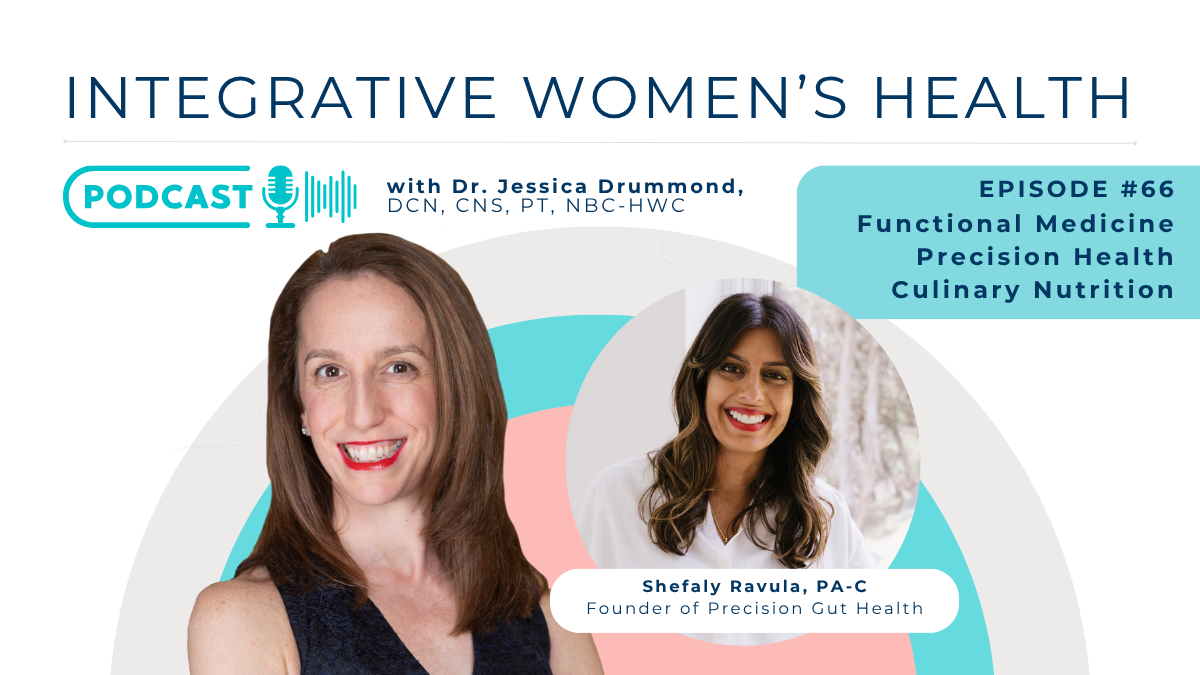Enjoy my recipe for this Healthy Estrogen Detox Smoothie, which is perfect for anyone struggling with estrogen dominance.
Estrogen dominance is a common issue for women with endometriosis, ovarian cysts, PCOS, PMS, painful periods, fibroids, and breast tenderness.
Also, for women who struggle with weight loss resistance or insomnia, elevated estrogen compared with progesterone (otherwise known as estrogen dominance), is a serious challenge.
Fortunately, there are nutrition and lifestyle strategies that are useful for balancing estrogen and progesterone. These strategies are beneficial to reduce cancer risk, and can improve the pelvic pain, breast pain and other symptoms related to endometriosis, ovarian cysts, PCOS, PMS, painful periods, fibroids, and breast tenderness in women who struggle with estrogen dominance.
- Eat more cruciferous vegetables (including broccoli, cabbage, and kale.) There is a strong association between estrogen metabolism and breast cancer incidence. Using cruciferous vegetables, which contain indole-3-carbinol (I3C) to induce oxidative cytochrome P450 metabolism, shifts estrogen metabolism (detox) to the healthier 2OHE1 pathway, lowering estrogen dominance and reducing female cancer risk.(1)
- Cilantro accelerated the excretion of heavy metals through the urine.(2) And, in a study of zebrafish, exposure to high levels of inorganic mercury caused histological damage and oxidative stress in the fish’s gonads. The mercury exposure also altered sex hormone levels by disrupting the transcription of related hypothalamic-pituitary-gonalal-axis genes.(3)
- Cucumber and Pear. Calcium D-Glucarate helps to reduce estrogen levels by enhancing the clearance of circulating estrogens. Cucumber and pear are natural sources of calcium d-glucarate. (4)
- Cayenne pepper. The active phytochemical in cayenne pepper, capsaicin, exerts a protective antioxidant effect on the liver in those with non-alcoholic fatty liver disease. (5) Thus, it may be supportive of liver function and protective of the liver during it’s metabolism of estrogen and other endogenous toxins.
- Filtered Water. In patients with advanced cancers, lower hydration is associated with increased symptom severity. (6) Most healthy people are normally hydrated, but 20% of healthy people are dehydrated regularly, straining their liver detoxification and renal systems. (7)
This estrogen-balancing smoothie will support your patient to healthfully metabolize (detoxify) estrogen through the normal detox pathways of the liver and kidneys.
Enjoy!
Recipe:
2 cups chopped kale
1/2 cup cilantro
1 cucumber (chopped)
1 pear (chopped)
1 lemon (peeled)
1 avocado (peeled and pit removed)
1 pinch of cayenne pepper
2 cups of filtered water
Blend and Enjoy!
(Makes 3 servings.)
References:
-
Michnovicz JJ, Bradlow HL (1991) Altered estrogen metabolism and excretion in humans following consumption of indole-3-carbinol. Nutr Cancer, 16(1), 59-66.
-
Omura Y, Beckman SL (1995) Role of mercury (Hg) in resistant infections & effective treatment of Chlamydia trachomatis and Herpes family viral infections (and potential treatment for cancer) by removing localized Hg deposits with Chinese parsley and delivering effective antibiotics using various drug uptake enhancement methods, Acupunct Electrother Res, 20(3-4), 195-229.
-
Zhang, QF, Li YW, Liu ZH, Chen QL (2016) Reproductive toxicity of inorganic mercury exposure in adult zebrafish: Histological damage, oxidative stress, and alterations of sex hormone and gene expression in the hypothalamic-pituitary-gonadal axis. Aquat Toxicol, 177, 417-24. doi: 10.1016/j.aquatox.2016.06.018.
-
Oredipe OA, Barth RF, Dwivedi C, Webb TE (1992) Dietary glucarate-mediated inhibition of initiation of diethylnitrosamine-induced hepatocarcinogenesis, Toxicology, 74(2-3), 209-22.
- McCarty, M. F., DiNicolantonio, J. J., & O’Keefe, J. H. (2015). Capsaicin may have important potential for promoting vascular and metabolic health. Open Heart, 2(1), e000262. http://doi.org/10.1136/openhrt-2015-000262
- Nwosu, A. C., Mayland, C. R., Mason, S., Cox, T. F., Varro, A., & Ellershaw, J. (2016). The Association of Hydration Status with Physical Signs, Symptoms and Survival in Advanced Cancer—The Use of Bioelectrical Impedance Vector Analysis (BIVA) Technology to Evaluate Fluid Volume in Palliative Care: An Observational Study. PLoS ONE, 11(9), e0163114. http://doi.org/10.1371/journal.pone.0163114
- Malisova, O., Athanasatou, A., Pepa, A., Husemann, M., Domnik, K., Braun, H., … Kapsokefalou, M. (2016). Water Intake and Hydration Indices in Healthy European Adults: The European Hydration Research Study (EHRS). Nutrients, 8(4), 204. http://doi.org/10.3390/nu8040204

